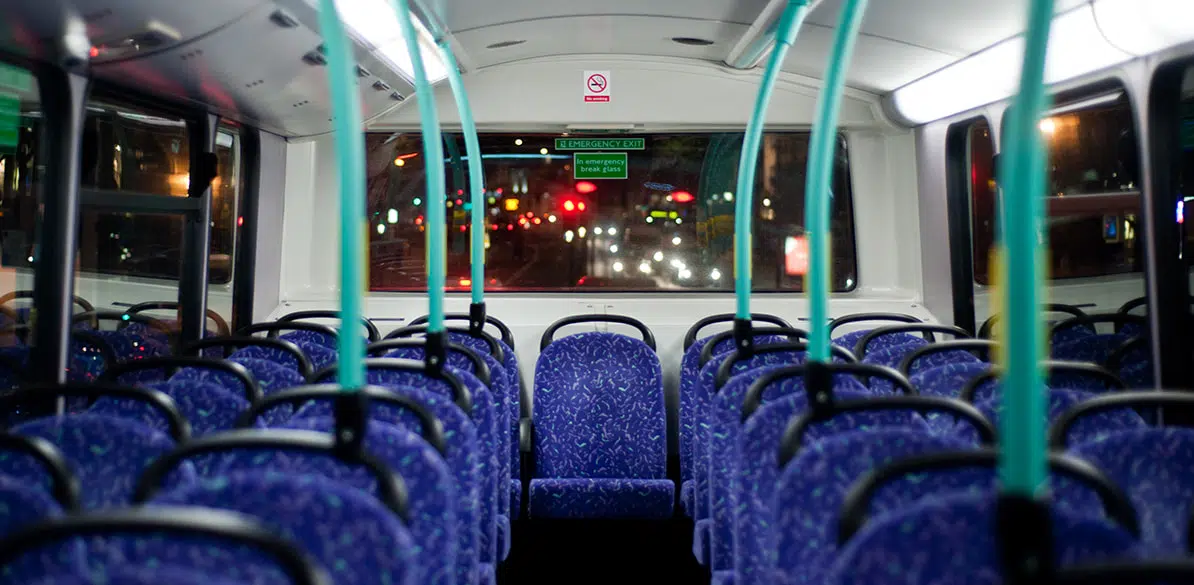Traveling safely with children on buses

In the first case, check that there is space in the middle of the bus for parking buggies and that there are special straps for affixing it in place.
But what do you do in the second case? In Spain, the General Traffic Regulations state that in the case of buses (vehicles designed for transporting passengers with a minimum of nine seats), children over three years old must use the approved restraint systems in seats equipped with seat belts or other approved retention systems.
When the children have grown a little more, they can use the seat belt on the bus’s seat, which usually has two anchoring points (i.e. those that go under the waist and over the hips). As there is no diagonal strap, i.e. the one that goes across the chest and collarbone, there are no height issues nor any risk of harming the child’s neck.
Remember that when you travel by bus, if the vehicle has seat belts both adults and children are obliged to use them by law, whether in towns or outside them.
Having said that, the ideal scenario would be to use a child restraint system. Nevertheless, due to the characteristics of bus seats, it is quite unlikely that you will be able to use your child car seat on them. In principle, there is nothing in the Regulation to prevent the use of an approved child restraint system if it can be properly secured to the seat.
If it fits between the rows of seats, without invading the neighboring seat, you can affix it with the seat belt and guarantee that it won’t roll over by securing it with the leg, adjusting it to the floor of the bus.
Although still very rare, there are also approved safety harnesses especially for bus seats, which are less bulky and are affixed with various straps and belts to the seat.
However, there is a legal loophole when it comes to children under three years old on buses, as there is nothing in the Regulation about this age group. In this case, you should again remember that however careful and cautious a parent might be when holding a child in their arms, in the event of sudden braking or a crash it would be impossible to keep hold of them and they would be thrown into the air. This is extremely dangerous.
You could try to use your own child seat, as explained above, which is obviously the ideal solution because this is the one that provides the greatest protection. The other option is to use a safety harness such as those approved for air travel. These are usually used for very small children and infants. You put the harness on the child, seat them on your lap, and affix the harness to the adult’s seat belt.
Remember, also, that regulations may differ slightly from one country to another, and you can check out the law of a specific country by referring to the Legislation section on our website.
